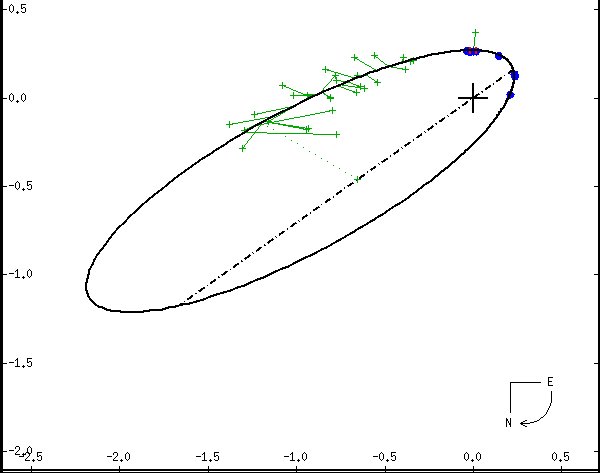
 |
With a long period of 737 years, Epsilon Lupi B is seen to go around Epsilon A (at the cross, the star itself a close binary) with an average separation of 221 Astronomical Units, a high eccentricity taking them between 42 and 400 AU apart. The green points were observed by traditional means, while the blue points are from recent and far more accurate data secured by a technique called "speckle interferometry," which eliminates the obscuring effects of stellar twinkling. In reality, the two stars go around a common center of mass set on a line between them but much closer to more-massive Epsilon-A. The true orbital semimajor axis and focus are offset from those of the apparent ellipse because of the 118 degree tilt of the orbit to the plane of the sky. (Courtesy of A. Tokovinin, B. D. Mason, and W. I. Hartkopf, in the Astronomical Journal.) |